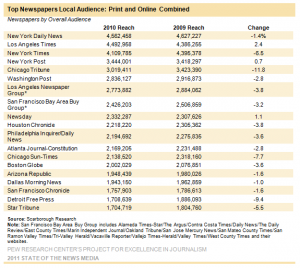In case you’re still not convinced about Twitter as a research tool, Twitter’s CEO, Jacky Dorsey, recently gave some wise advice at The Economist’s Ideas Economy: Innovation event:
It’s never been easier to start a company since Twitter exists. We get this instant pulse of what’s happening around any topic.
Let’s face it: Twitter is not for everyone. Not every company or every brand should have an official Twitter handle. I think we will all be happy if our toilet brush never says hello to us in 140 characters.
One thing is pretty universally true, though. With more than 450,000 people checking it out every day, there are bound to be people talking about your product or your core consumers talking about other products they love. Continue reading


